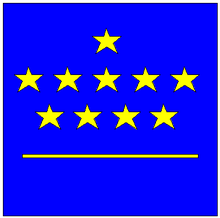
Back المرصد الملكي (بلجيكا) Arabic مرصد بلجيكا الملكى ARZ Reial Observatori de Bèlgica Catalan Königliche Sternwarte von Belgien German Reĝa observatorio de Belgio Esperanto Real Observatorio de Bélgica Spanish رصدخانه سلطنتی بلژیک Persian Observatoire royal de Belgique French Բելգիայի թագավորական աստղադիտարան Armenian Osservatorio Reale del Belgio Italian
 | |
 | |
| Observatory code | 012 |
|---|---|
| Location | Uccle, Arrondissement of Brussels-Capital, Brussels, Belgium |
| Coordinates | 50°47′53″N 4°21′31″E / 50.798179°N 4.358628°E |
| Established | 1826 (Saint-Josse-ten-Noode) 1890 Uccle |
| Website | www www |
| Telescopes |
|
| | |
| see § List of discovered minor planets |
The Royal Observatory of Belgium (French: Observatoire Royal de Belgique; Dutch: Koninklijke Sterrenwacht van België) has been situated in the Uccle municipality of Brussels since 1890. It is part of the institutions of the Belgian Federal Science Policy Office (BELSPO).
The Royal Observatory was first established in Saint-Josse-ten-Noode in 1826 by King William I of the Netherlands under the impulse of Adolphe Quetelet. It was home to a 100 cm (39 in) diameter aperture Zeiss reflector in the first half of the 20th century, one of the largest telescopes in the world at the time. It now owns a variety of other astronomical instruments, such as astrographs, as well as a range of seismograph equipment (for detecting earthquakes). Its main activities are reference systems and geodynamics, astrometry and dynamics of celestial bodies, astrophysics, and Solar physics.
The asteroid 1276 Ucclia is named in honour of the city and the observatory and 16908 Groeselenberg is named for the hill the observatory is located on.
